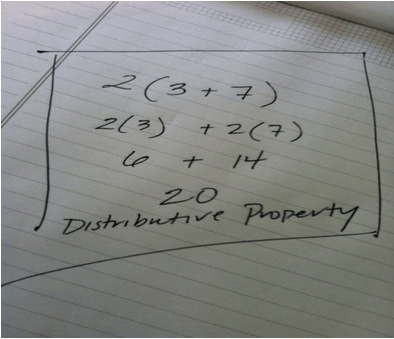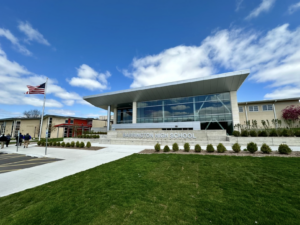Middle School Math Chat: Connections are Key

The intermediate grades serve as formative years for conceptual understanding of content and emotional connection/attitude toward mathematics. While students are learning the key concepts that will be carried with them throughout the rest of their math careers, they are also developing their love (or hate) of the subject. Competency in these foundational skills will prepare students for success, while a lack of understanding can hinder growth and motivation.
Last week, Tim Hudson from DreamBox Learning joined us to chat a little about intermediate math. Motivated by the fact that these formative years are key in the development of lifelong mathematical understanding, we dove into the importance of teaching Algebra Reasoning in the early grades, how to build key connections for students and why thinking about intermediate students a little differently can help build a community of mathematicians.
Teaching Algebra Reasoning Early On. Just as In literacy education, where there is said to be a shift that happens in about 4th grade, where students go from “learning to read” to “reading to learn,” there is an important point in a student’s math career, where they transition from a general understanding of the number system to a thoughtful use of this system to model the world around them. Without a conceptual understanding of the skills and ideas that are taught in the intermediate grades, this shift is difficult for students to make successfully.
Although often assumed a high school or middle school concept, Tim explained that Algebra Reasoning can and SHOULD be taught early on. The operations used in Algebraic Reasoning can be taught as soon as kids learn basic operations. For example, lets look at the Distributive Property:
Most Algebra 1 textbooks teach the distributive property as a (b + c) = ab + ac and students practice basic use of the property in examples such as this 3(x + 2) = 3x + 6. For every high school or middle school teacher that has seen the answer to the above question come in as 3x + 2, you know that it would be extremely beneficial if there was a conceptual understanding of the idea that had been developed long before variables were even introduced. The classic Algebra 1 class should be more of a formalization of these ideas and a higher level of abstraction with more variables.
Imagine the same property in an elementary classroom with gaming and visualization software that help the idea come to life:

We know that success in Algebra correlates to future success in mathematics, why not teach algebra reasoning as soon as we can?
Learning Through Connections. One of the biggest challenges for math teachers and students is building connections. In the Google Hangout, we talked a lot about fractions, ratios, and proportionality. If fractions are introduced in ways that are limited, then so is a student’s ability to make strong connections. We need to help kids think about the topics more broadly to build critical understanding. In Algebra 1, if students first focus only on linear relationships the move on to exponentials and quadratics can be confusing – another example where connections are key. If we focus more on the relationship and a strong understanding of what the equation or function is representing in terms of this relationship, then we can help students make more of these critical connections. Adaptive and game-based learning are great examples of how to create non linear sequencing that connect the mechanics with the concepts and develop a robust understanding of the material.
Intermediate Kids are different than primary. Intermediate and middle school kids are not as easily impressed with basic virtual manipulatives. They have more experience with gaming and therefore expect a lot more out of their online experience. A successful middle school classroom structures the engagement differently to help students make sense of it all. A good online resource approaches the math differently AND builds the game differently – both with the middle school brain in mind.
These students are also social beings, we can’t fight it, we have to embrace it. Math should be a lot more conversational than we currently make it. Why not have the whole class engaged in a problem by finding a problem worth discussing as a community of mathematicians. Jason Zimba talks about “A related boundary condition is that rotation models should regularly allow time for the whole class to concentrate together on the same well-designed, carefully sequenced problem.” Great math communities engage all students through tackling tough problems and building upon each other’s ideas. They support failure by creating an environment where it is okay to struggle. Imagine peer support for struggle, not peer pressure against it. As Tim states in the Google Hangout, “The math classrooms that I want for my kids are places where they can engage in really great thinking and dialogue rather than as places where they go to acquire information.”
We want students to think more, it is okay for them to leave the classroom not fully convinced, but it is not okay for them to leave not thinking. Look to the example Massachusetts Institute of Technology sets with their 18.821 Project Laboratory in Mathematics. Professor Haynes Miller has creative an “innovative course model that fosters student creativity and shows mathematics as a dynamic and ever expanding field” through an introduction to true mathematical research. This is a great video that dives into exactly what this looks like at MIT.
Can you image a kid that can’t sleep at night because they are so deeply engaged in the thinking of mathematics? We need to create and foster environments that inspire that kind of math thinking!
This blog is brought to you by The Nellie Mae Education Foundation as part of a series on blended math. For more stayed tuned for the Getting Smart on Blending Middle Grade Math bundle and see the other posts in this series:
- Reflections on a Khan Blend
- Lessons from Math KIPP Blends
- Smart Balances in Smart Blend
- Summer School: A Great Time to Try Blended Learning in Middle School Math
- Make or Break, Why Middle School Math Counts
DreamBox Learning is a Getting Smart Advocacy Partner.







0 Comments
Leave a Comment
Your email address will not be published. All fields are required.